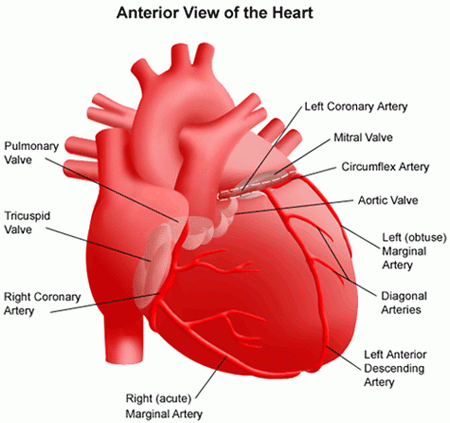What makes Dr Garcia a standout choice for heart care
What makes Dr Garcia a standout choice for heart care
Blog Article
Comprehending the Value of Cardiology in Modern Health Care Services
Cardiology plays an essential duty in contemporary medical care, specifically as cardiovascular disease remains to be the leading reason of death worldwide. Breakthroughs in diagnostics and therapy have actually transformed client treatment, making it possible for earlier interventions and improved end results. In addition, the change towards precautionary cardiology empowers people to handle their health proactively. As technology remains to progress, the combination of cutting-edge services might further redefine cardiology's influence on public health, prompting a more detailed assessment of emerging patterns and their ramifications.
The Occurrence of Cardiovascular Disease and Its Impact on Public Wellness
Although heart condition continues to be the leading reason of fatality internationally, its impact expands far beyond specific patients to influence public wellness systems and economic situations. The high frequency of cardiovascular disease places a considerable strain on health care resources, demanding increased financing for prevention, therapy, and rehab programs. Public health initiatives should address threat factors such as excessive weight, smoking cigarettes, and less active way of lives, which contribute significantly to the climbing occurrence of heart conditions.Moreover, the financial problem connected with heart disease is immense, encompassing not only straight medical costs yet also indirect costs associated to lost efficiency and premature death. Communities encounter obstacles in handling these costs, typically bring about variations in health care accessibility and results. As the populace ages and lifestyle-related threats continue to intensify, the seriousness for reliable cardiology interventions becomes paramount. Subsequently, resolving heart illness is not only an issue of specific health but additionally a critical public wellness concern.
Breakthroughs in Heart Diagnostics and Imaging Techniques
Recent developments in cardiac diagnostics and imaging techniques have actually reinvented the area of cardiology, enhancing the capacity to detect and monitor heart conditions. Strategies such as cardiac MRI, CT angiography, and echocardiography have actually become significantly advanced, providing thorough pictures of heart frameworks and features. These techniques permit for the very early recognition of problems like coronary artery illness, heart failure, and valvular disorders.Moreover, innovations in non-invasive diagnostics, such as wearable technology and remote monitoring devices, have actually empowered people and health care suppliers. These tools promote real-time tracking of heart rhythms and other vital indicators, resulting in timely treatments. Additionally, fabricated knowledge is being incorporated right into imaging evaluation, enhancing precision and performance in diagnosis.
Developments in Treatment Alternatives for Heart Conditions
Recent advancements in cardiology have caused substantial advancements in treatment options for heart disease. These include advanced medical strategies that boost step-by-step results and emerging medications that use new methods for therapy. As the area evolves, these developments play an essential role in boosting person treatment and results.
Advanced Surgical Techniques
Technologies in medical strategies have transformed the landscape of cardiology, providing new hope for individuals with heart disease. Minimally intrusive treatments, such as catheter-based interventions, have greatly reduced recuperation times and health center remains. Strategies like robotic-assisted surgical treatment enhance precision, permitting specialists to navigate complicated anatomical frameworks with greater accuracy. Furthermore, improvements in imaging modern technology help with real-time visualization throughout treatments, improving outcomes. Transcatheter aortic shutoff replacement (TAVR) exemplifies a development in dealing with aortic stenosis, enabling shutoff substitute without open-heart surgical treatment. Additionally, hybrid strategies that integrate catheter-based and medical approaches give customized remedies for various cardiac issues. These advanced medical methods not only boost individual safety and security however also broaden treatment alternatives, underscoring the vital role of innovation in contemporary cardiology practices.
Emerging Therapies and drugs
As the landscape of cardiology proceeds to evolve, arising treatments and medications play a pivotal duty in enhancing treatment alternatives for heart disease. Developments such as novel anticoagulants and advanced lipid-lowering agents have changed the monitoring of cardio illness, significantly reducing client morbidity and death. In addition, the growth of genetics therapies and regenerative medication provides promising methods for treating problems formerly regarded irreparable. Clinical trials are consistently exposing the efficacy of these therapies, pressing the boundaries of traditional treatments. Moreover, the combination of electronic health innovations assists in tailored medicine, enabling for tailored treatment strategies based on hereditary and way of living factors. Jointly, these developments highlight the dynamic nature of cardiology, enhancing client end results and redefining criteria of treatment in modern medical care.
The Function of Preventive Cardiology in Patient Care
Preventative cardiology plays a necessary duty in client care by concentrating on the identification of risk variables that add to heart illness. With lifestyle alteration methods and very early detection methods, healthcare companies can efficiently decrease the occurrence of cardio occasions - Cardiology care. This proactive approach not only enhances client end results yet also promotes lasting wellness
Risk Factor Identification
While cardiovascular diseases continue to be a leading source of morbidity and mortality worldwide, efficient risk variable recognition works as a keystone of precautionary cardiology. Recognizing risk factors such as hypertension, family, diabetes mellitus, and hyperlipidemia history is necessary for early intervention. Health care specialists use different screening techniques to examine these factors, enabling customized precautionary actions. Additionally, understanding a client's way of living options, such as cigarette smoking and physical inactivity, even more educates risk evaluations. This extensive analysis makes it possible for clinicians to establish customized treatment plans aimed at mitigating threats. By prioritizing danger variable identification, health care systems can boost patient outcomes and lower the total concern of cardio conditions, ultimately contributing to improved public health methods and resource allotment.
Lifestyle Alteration Approaches
A multitude of research studies highlights the important role of lifestyle adjustment methods in reducing heart disease threat. These methods encompass dietary modifications, enhanced physical activity, smoking cessation, and weight monitoring. By embracing a heart-healthy diet abundant in fruits, vegetables, entire grains, and lean proteins, individuals can lower cholesterol degrees and blood pressure. Normal exercise enhances the heart and enhances total cardio health. Furthermore, stopping cigarette smoking considerably reduces the risk of cardiovascular disease and enhances recuperation prices for those with existing problems. Weight management additionally adds to cardio health by mitigating other danger elements such as diabetes and hypertension. Carrying out these lifestyle alters not only advertises specific well-being yet additionally functions as a keystone of preventive cardiology in patient treatment.
Very Early Detection Techniques
Way of life adjustments considerably add to decreasing cardiovascular condition dangers, yet they are most effective when coupled with very early discovery methods. Preventive cardiology stresses the relevance of identifying possible heart issues before they intensify into severe conditions. Techniques such as blood pressure monitoring, cholesterol testing, and progressed imaging innovations like echocardiograms play important functions in evaluating cardio health and wellness. Biomarkers and hereditary screening also enhance the precision of very early detection, enabling customized preventive strategies. Normal heart risk examinations equip healthcare carriers to step in proactively, potentially avoiding heart assaults and strokes (Cardiology). By incorporating these early detection methods into routine treatment, individuals can gain from timely way of living interventions and targeted therapies, eventually improving and enhancing end results lifestyle
Integrating Modern Technology Into Cardiology Practices
As innovations in modern technology remain to improve various fields, the integration of ingenious devices and systems right into cardiology practices has actually become essential for improving client care and end results. Telemedicine platforms permit cardiologists to check individuals remotely, boosting accessibility to care while reducing the problem on medical care facilities. Wearable tools, such as smartwatches, allow continual heart rate tracking, signaling both clients and physicians to prospective concerns in real-time. Additionally, artificial intelligence (AI) is being utilized to analyze huge quantities of cardiac information, aiding in very early medical diagnosis and tailored therapy strategies. Advanced imaging techniques, consisting of 3D echocardiography, improve visualization of heart frameworks, resulting in a lot more accurate treatments. Digital health documents (EHRs) enhance client info management, guaranteeing that cardiologists have instant accessibility to important information. Together, check these technological improvements are changing cardiology, promoting positive administration and improved wellness results for individuals with cardio conditions.
The Value of Person Education and Interaction
Client education and learning and interaction play an essential duty in the management of cardio health and wellness. By equipping clients with understanding regarding their conditions, therapy options, and way of living modifications, medical care suppliers equip individuals to take an active duty in their care. This proactive approach can bring about improved adherence to prescribed medications, dietary adjustments, and workout programs, ultimately minimizing the danger of complications.Engagement also cultivates a solid patient-provider connection, encouraging open communication and count on. When people really feel educated and entailed, they are more probable to voice problems and ask concerns, which can lead to far better scientific end results. Additionally, academic sources, such as workshops or digital systems, can improve understanding and advertise self-management techniques. Overall, prioritizing person education and learning and involvement is crucial for improving cardio wellness, boosting top quality of life, and decreasing medical care costs related to cardiovascular conditions.
Future Patterns in Cardiology and Their Possible Impact

Regularly Asked Inquiries
What Way Of Living Changes Can Minimize Heart Problem Risk?
The existing inquiry addresses way of living changes that can significantly minimize cardiovascular disease risk. Cardiology care. Adopting a balanced diet regimen, participating in normal physical activity, maintaining a healthy and balanced weight, managing tension, and staying clear of cigarette can significantly enhance cardio health and wellness
How Can I Acknowledge Very Early Indicators of Heart Problems?
Identifying early indicators of heart problems involves surveillance signs such as breast discomfort, shortness of breath, exhaustion, and uneven heartbeat. Prompt understanding of these indications can trigger needed clinical examination and treatment for much better results.
What Are the Distinctions In Between Cardiologists and Heart Surgeons?
The differences in between cardiologists and cardiac doctors hinge on their duties; cardiologists mostly detect and manage heart conditions through non-invasive approaches, while cardiac surgeons carry out operations to correct architectural heart problems. Each plays an essential, distinctive role.

Just how Usually Should I Obtain My Heart Wellness Checked?
The frequency of heart checkup differs based upon private risk elements. Usually, grownups must go through examinations every one to two years, while those with status quo may need more frequent assessments as encouraged by health care professionals.
What Duty Does Genes Play in Heart Condition Threat?
Genetics considerably influences heart problem danger, with domestic patterns indicating inherited problems. Specific genes can incline individuals to hypertension, cholesterol issues, and various other cardio troubles, highlighting the value of genetic screening in examining heart health and wellness. Heart disease stays the leading reason of death internationally, its effect prolongs far beyond click individual patients to influence public health systems and economies. Public wellness initiatives must deal with danger variables such as obesity, cigarette smoking, and inactive way of lives, which add greatly to the climbing incidence of heart conditions.Moreover, the economic concern connected with heart illness is enormous, encompassing not just direct medical expenses but likewise indirect expenditures associated to shed efficiency and premature death. Precautionary cardiology plays a necessary duty in individual care by concentrating on the identification of danger aspects that add to heart condition. Artificial knowledge (AI) and device understanding are improving diagnostics and person monitoring, enabling very early detection of heart diseases. The differences between cardiologists and cardiac specialists lie in their functions; cardiologists mostly identify and take care of heart problems with non-invasive techniques, while cardiac doctors do medical procedures to fix structural heart concerns.
Report this page